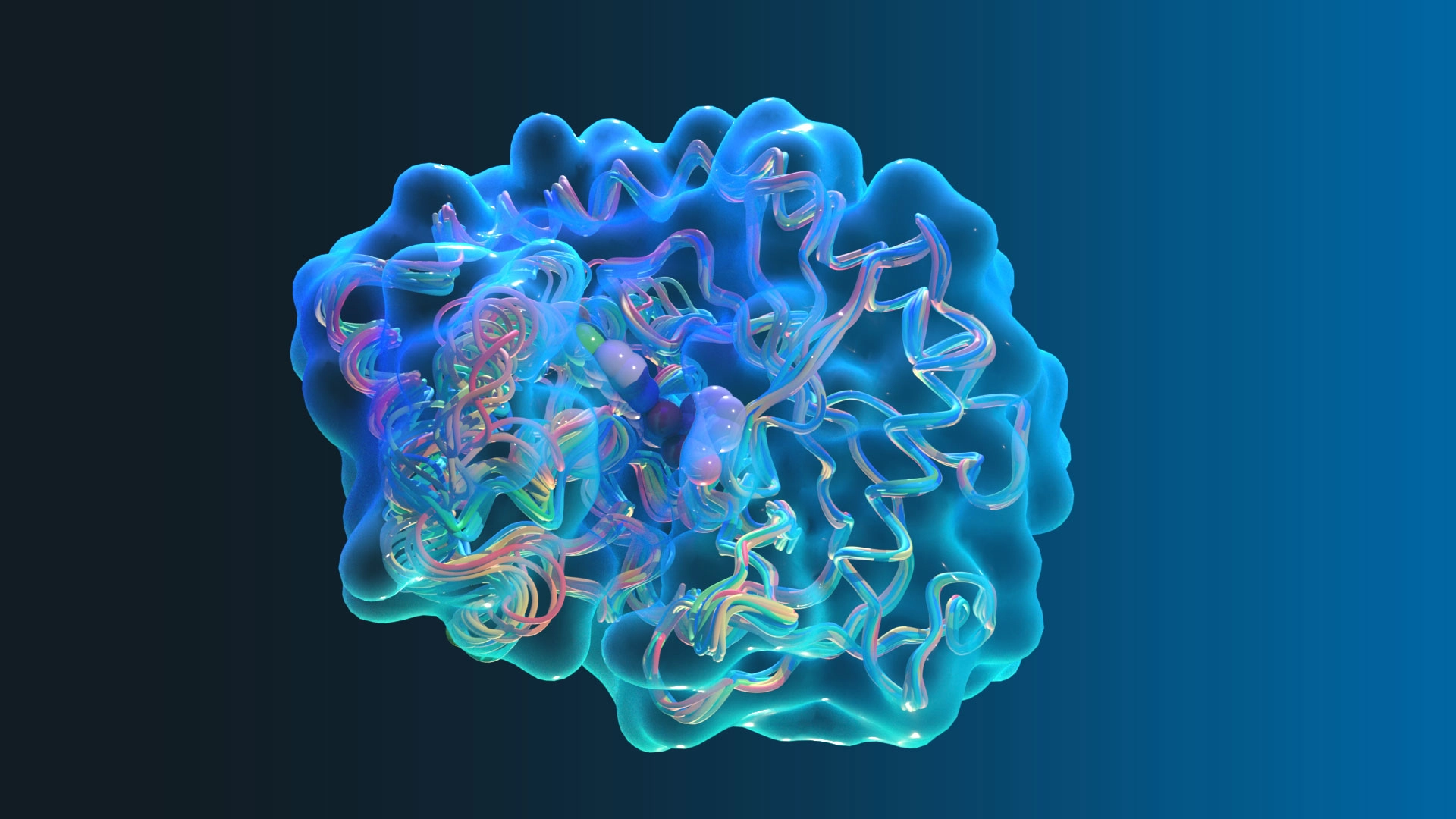We simulate biological molecules using the laws of physics. This allows us to predict interactions, energies and the conformational behavior of our drug discovery targets.
We explore beyond binding, simulating the dynamic behavior of protein-ligand interactions to reveal how conformational changes drive biological activity and how that activity can be modulated with small molecules. We harness biophysics, biology and medicinal chemistry to focus our simulation efforts on the challenges and bottlenecks directly relevant our drug discovery projects. This leads to a richer understanding of the relationship between protein conformations and biological outcomes and enables us to design drug molecules atom-by-atom to address targets that have previously been considered “undruggable.”
“If we were to name the most powerful assumption of all, which leads one on and on in an attempt to understand life, it is that all things are made of atoms, and that everything that living things do can be understood in terms of the jigglings and wigglings of atoms.”
Richard P. Feynman
The QUAISAR platform allows us to predict the jiggling and wiggling of atoms in a biological system. However, predicting that motion alone does not tell us about the fundamental free energy landscape of the system and how it can be modulated with potential drug molecules to alter a disease therapeutically. Fortunately, when we take all of that information from the jiggling and wiggling and apply statistical thermodynamics, we are able to compute both entropy (the amount of disorder in a system) and enthalpy (the total heat content of the system) and apply our insights to the delicate balance of human biology through carefully designing small molecules.
Uncovering Conformational Behavior
Biological systems are in constant motion. The motion of proteins and other flexible biomolecules, and how they interact, determines the state of the biological system. Subtle anomalies can shift the state of an organism from health to disease. Our molecular dynamics simulations lead Psivant scientists to develop conformational hypotheses at an atomic scale which inform our screening, design and analyses. This process is similar to the work of architects, who require immersive 3D computer-aided design to assess structural requirements and model how a building will function. However, for biological systems it is the time-evolution of the 3D molecular shapes that dictates their behavior, which is why we model this precise behavior using accurate all-atom molecular simulations.
Our approach features the rigorous evaluation of structural data gleaned through simulations of proteins in motion. We then design novel therapeutic molecules, atom-by-atom, prioritized for synthesis to enter our in-house laboratory for testing. We continually compile data through a combination of simulations and experiments, which we use to augment our simulations with machine learning approaches as we drive our programs toward the clinic.
As our drug design process progresses, we gain critical insights into the shape-shifting behavior of our protein targets and how our in-house designed therapeutic molecules can modulate the behavior. Ultimately, our cross-functional teams advance potential drug candidates to address previously undruggable protein targets with the goal of delivering novel therapeutics to treat patients.
